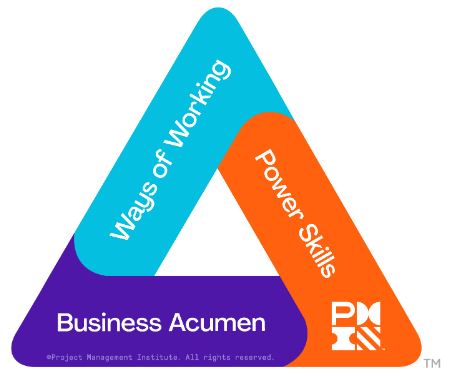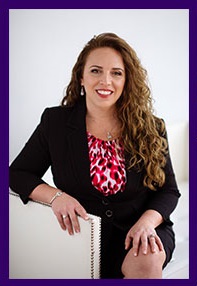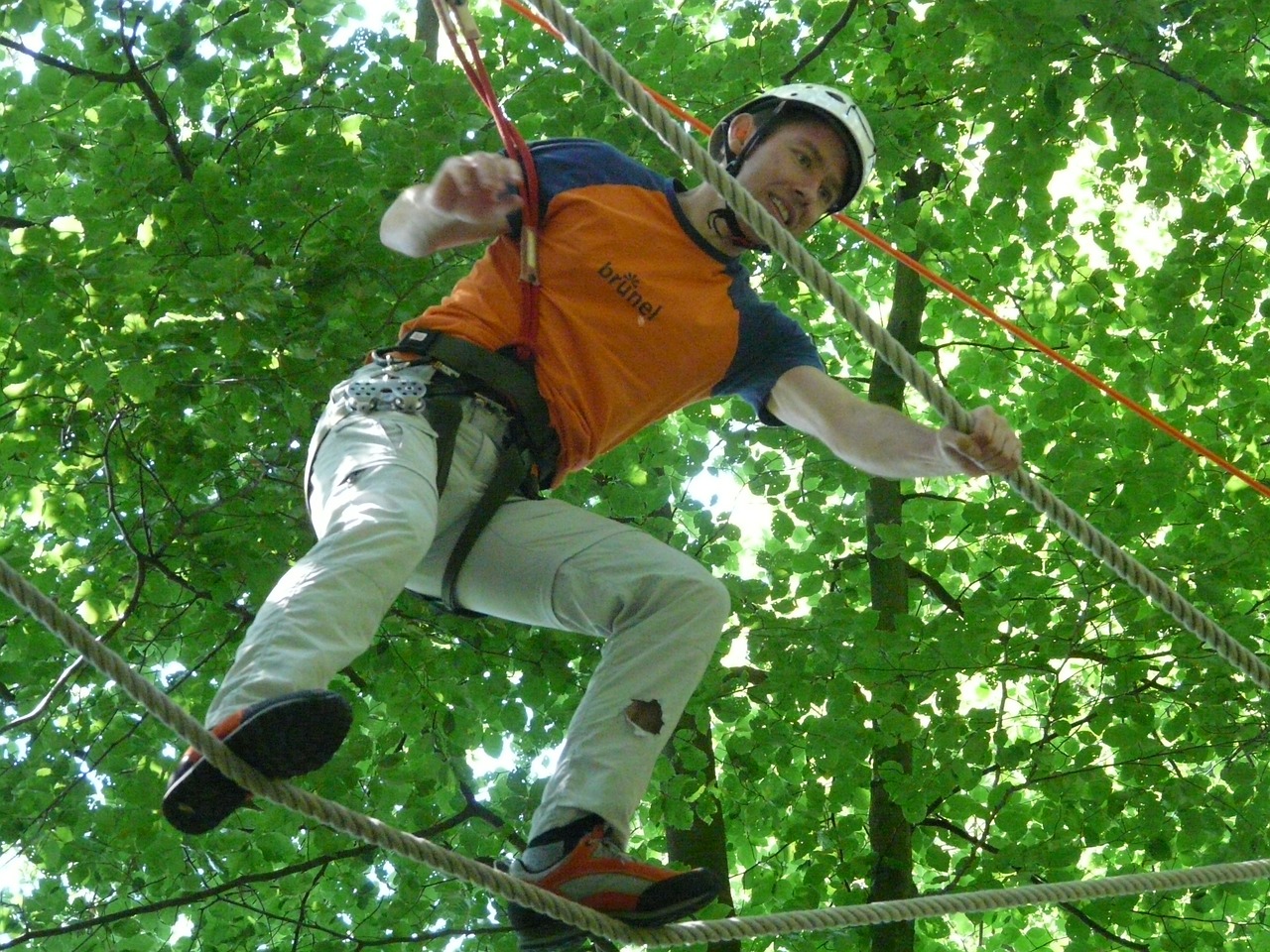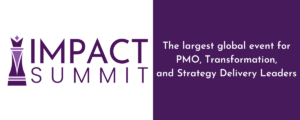
PMI Talent Triangle: Business Acumen (Strategic and Business Management)
Welcome to the PMO Strategies Podcast + Blog, where PMO leaders become IMPACT Drivers! Today we are talking with a fellow thought leader in the PMO and project management space, Peter Taylor. He is a PMO expert who has built and led five global PMOs across several industries and has been a strategic advisor to many other organizations on Change Management and project strategy. He’s also the author of the number one bestselling project management book, The Lazy Project Manager along with many other books on project leadership, PMO development, project marketing. Peter has been described as perhaps the most entertaining and inspiring speaker in the project management world today. His mission is to teach as many people as possible and spread the word that it is achievable to work smarter and not harder and still gained success.
Laura Barnard: Welcome Peter, before we dive into our topic today, which is going to be a lot more about business agility and the role of the PMO and kind of just start them thinking about a different way to help make an impact with the PMO. I want to talk about this lazy project manager concept and what that really means because it’s super cool sounding, but it really is important to think about when you’re thinking about where you’re spending your time and energy.
Peter Taylor: A gentleman I worked for in a number of companies, one day we were on a flight back from Italy, and called me lazy. I took it personally. I thought he liked me, he keeps employing me, why would he call me lazy? Turns out, It was a compliment from his point of view about the way I work. The effective way I work. At the same time, I was running a PMO with just over a hundred project managers. Half the group, broadly speaking, we’re being reasonably successful. None of us were perfect. We could definitely improve, but reasonably successful. And on average they were working a typical working week. Then we know projects go up and down in demand at the time, but on average they’re working a typical week. The other half were working in my mind, crazy hours. You know, they were telling me they are working 50, 60, 70 hour weeks more, um, and yet they were no more successful. So I did some research, if you like, into the way that they were each managing their time, what they can got involved in during the meetings, the decision-making process, et cetera. I kind of uncovered this idea that some project managers just get dragged into so much detail and I recognize that what I was when I first started out as a project manager. From that evolved a lazy project manager concepts. It’s been a great brand. People say “I’m delighted to be known as the Lazy Project Manager.”
Laura: I’m always talking to my students in my programs about finding ways to streamline and optimize and get rid of all the stuff, all the extra, all the things that are not necessary that ended up taking up a lot of our time and focus so that we can focus on the most important thing. I love the topic and the concept, and when I first heard of you a few years ago, I was just eager to dive in and listen to your podcast and learn more about you because I thought it was just so cool that you had hit the nail on the head with, it’s about finding the fastest and easiest way to get something done. And so if that means being lazy, call me lazy too. If I think about that in my personal life, the people that I know that are lazy or make minimal effort, if they’re still getting stuff done, then they’re probably the secret geniuses of all of us.
Peter: The caveat I talk about is productive ease…That’s the key. It’s being productively lazy not just normal lazy.
Laura: We still have to be able to get stuff done. Right. So for all of you listening today, all of my IMPACT drivers and PMO leaders out there, we are thrilled to be able to announce that Peter is going to be a part of the PMO IMPACT Summit. I’d to talk a little bit about the mindset shifts and the way we need to be thinking about our role as PMO leaders in this world of business transformation and business agility and the new ways that we might want to be working through the PMO. Let’s go back to the beginnings of that conversation with the PMO. What’s changed over the years? How is the PMO space evolved and how has the role of the PMO evolved and what have you seen personally in your experience running all these different pmos and organizations?
Peter: My very first PMO was, wasn’t even called a PMO, it was a center of excellence or community practice. At that point, we had project managers all over the world and they were just disconnected and finding ways to be successful on their own. The first step was connecting people together. Then it just got bigger. The sheer scale, I reached a point of running the PMO with a few hundred project managers, thousands of projects around the world. That’s what the PMO is about, taking it to that level of scale around the quality assurance. In the last couple of years, it’s really changed because businesses have changed. That’s why I talk these days about business agile driving new ways of working through the PMO. Business transformation is just a high priority in today’s landscape. I mean it is just huge. Whether you’re talking about digital transformation or business transformation or cultural transformation, the scale is enormous. Linked to that is the complexity and the speed of what is required and the agility of how you have to go about it. The big difference right now is on the topic of business agility, what that actually means to an organization, and how that organization struggles to execute against that business agility strategy. That really is the topic for me, I think in the world of PMOS.
Laura: For those that wondering what you are talking about with business agility, can you talk about what that means to you and then we can kind of dive into what that means for the PMO?
Peter: Yeah, sure. There’s a great Forbes article by Steve Denon, back in February 2019. In the article, it was suggested that the world right now was entering what he called the “age of agile.” What did this mean? He says if you look at the fastest growing companies on the planet, you know, Apple, Amazon, Facebook, Google, Microsoft, these are the ones that have adopted this new approach of flexibility, of agility. And so business agile, it’s just that recognition that right now there is a need to move faster. There is a need to adapt and evolve, in a way that hasn’t been done before. It’s just a recognition that there is some sort of term that describes this business transformation. It’s business agility. The problem is how does the rest of the business spin on access and deal with this new world?
Laura: Right, right, exactly. And I think it’s important to clarify, we’re not necessarily talking about agile implementation methodology here, but the hundred thousand foot view of being nimble, flexible, adaptable, and responding quickly to the environment around you. Right? Peter: Yes, absolutely. Right. It’s, it’s just a way of creating value in a rapid way.
Laura: For all of you PMO leaders, think about how many markets have been disrupted by new technology and new ways of thinking and operating. I mean, think about it. Just 10 years ago, you would never even think about getting in a car with a stranger to get from point a to point B unless they were with the taxi cab company. Well, now we do it all the time with Uber and Lyft. Think about when you would want to go on vacation, you would look at what hotels were in that area and then you pick one of those hotels and that was your only option. Now, look at Airbnb and VRBO. Look at some of these other organizations that have taken over the way we do, almost everything we do nowadays is totally different than how it was 10 years ago. And if you aren’t adapting to thrive is what I call it. If you don’t shift the way that you do what you do, then you’re going to be left behind. And that’s happening so much faster these days, isn’t it?
Peter: Oh, absolutely. I was in a company long ago and I was asking them about their internal decision-making process and they were describing a bureaucracy. So I said, what do you do in your personal life, your decision-making process? You are making decisions at lightspeed in your personal life, then you come to work and everything slows down to an absolute bleed. Businesses have to get it. The ones that are gonna be successful are the ones that get it and change.
Laura: Yeah, absolutely. And so now bringing this to PMO leaders that are listening, I can almost hear their, “yeah, buts.: I have this thing, I call this term, I call the “yeah, but” monster, which means, “yeah, but I’m not responsible for that” or “yeah, but that doesn’t affect our organization.” What would you say to those that are listening today as PMO leaders primarily or those that are trying to make a big IMPACT with project management? What would you say to that “yeah, but” monster, when it starts creeping in and helping them distance themselves from this problem, this challenge that we need to be thinking about from a business agility perspective?
Peter: We know PMOs are challenged out there and as many disappear as appear. It’s been a battle and I think the ones that kind of get it right are the ones that are moving up the strategy tree. A PMO can be the custodians of strategy: you’re given projects, you look after them, you do a great job around resource management, tracking the portfolio, dashboards, and all those things. But really that’s just being the custodians. The most powerful PMOs are the ones that actually have a seat at the table of strategy. They have input. We’ll touch upon this in my a session for the PMO IMPACT Summit, it’s the move from the cooperative world to the collaborative world. That’s a big difference because you could say we’ve always been cooperative in the world of PMOs and projects and management of projects because we have that mutual respect. We have a degree of transparency, we have shared goals, we’re kind of independent but also dependent on each other. We have a kind of a loose network that exists. You are in the project delivery, all those sorts of things. Connection brings about a significant advantage in the workplace. But if you move across to the more collaborative world, it’s where there are mutual trust and vulnerability and there’s this shared vision and shared value. Then you, you just have this much better, tighter culture. If I go back to my first PMO when I used to go and sit in on project review and team meetings. You’d have 10 people sitting in a room who would discuss a problem, decide what the options were, and take some action. Now I’ve seen projects where you can have a hundred people virtually involved through business social tools where they share their wisdom, their knowledge, and their advice from a subject matter expert. It’s probably a better answer than the one you would’ve got from a team of 10. This is one of the big things here, the concept of the hive mind.
Laura: I think that’s really important. There’s a few things in there that I want to touch on and emphasize. So one, you talked about cooperative versus collaborative, and I think that there’s a really important difference in the proactive versus reactive. The other thing you were talking about shifts to where I’m hoping we can go next, which is the role of the PMO and having a seat at the table. Some of our colleagues would say, they don’t have to, and I agree that a PMO doesn’t have to be strategic in nature or only managing strategic projects in order to have a seat at the table to help drive the decision-making process around strategy. There are two different things you can be managing very tactical or technical functional projects and still be helping the organization achieve its strategic goals. Right?
Peter: Yeah. I think an example of that is going to one of the big problems I see out there is connectivity from the highest level through to the the change managers. I think if you’ve got an organization that respects the PMO, understands what the PMO is trying to do, then the voice is not a voice at the board table talking about what they’re going to do in the next five years or anything like that. It’s a voice that says, “hang on, I see a problem here.” One of the other areas I’m definitely going to be talking about is this connection between C-level executives, connections with project sponsors, connecting that down to project managers. So many times I see that connection broken in one or even two places inside an organization and that’s when real problems occur. If you haven’t got that connectedness thing, you’ve got no chance of being business agile. We’ll bring it back to the primary theme of the talk I’m be going to be giving…You have to have a solid connection between executive sponsors and project managers/change agents to ensure that you can then move forward and become business agile. Otherwise, if it’s broken, t’s gonna fail completely as you try to keep up with the modern world.
Laura: Exactly. What you’re touching on is another place where I hear that “Yeah, but” monster come out with my students sometimes, and that is, “but the C-suite doesn’t get it.”
Peter: I tend to ask some PMO test questions. One of them is to phone up your CEO and see how long it takes them to recognize who the hell you are. If he takes more than a minute, then you’re in trouble and you are not connected at the right level.
Laura: I think I want to push it a step further and say it’s not a disconnected problem, but it’s based on a lack of value. It’s a value problem, right? It’s a value proposition problem. It’s a return on investment problem. They don’t see that you’re actually doing anything to help make their lives better. Therefore, why do they need you, right? I don’t want to give away everything that you’re going to be talking about at the PMO IMPACT Summit but for now, Peter, can you just help them with kind of the big picture around why this is important, but what are the first things that they should be thinking about or doing or how can they prepare to have that right conversation if they aren’t even being recognized by the C-Suite?
Peter: One of the three key areas I’m going to be talking about is that it’s all about ensuring divisions that are aligned from the C-suite to those directly working on the profit project itself. Leveraging large scale collaboration and defining the kind of leadership qualities and best practices necessary to run a successful next-gen PMO. You know the five Ps, there is people, process, performance, promotion, and projects, information systems. The first balancing act is getting into the right bass ring process and people. If you just got pure processing, you are checklisting, you are methodology masters, and project police. If you don’t have that then you’re also a very weak PMO, you have to have a component to that equity. If you are focusing on just people, making sure you give your project managers every little bit of help they can have, that can make you a very nice person, a nice PMO, but it can be a little bit weak. The very first thing is to get the balance between people and process.
Laura: Right. As a PMO you need to understand the basics of marketing, all marketing is, is helping you connect the service and the value you provide with the people that need what you do. As a PMO it is so important. Thank you so much, Peter. And of course, they’re going to go check out your resources at thelazyprojectmanager.com.
T hanks for taking the time to check out the podcast!
hanks for taking the time to check out the podcast!
I welcome your feedback and insights!
I’d love to know what you think and if you love it, please leave a rating and review in your favorite podcast player. Please leave a comment below to share your thoughts. See you online!
Warmly,
Laura Barnard









[…] The Lazy Project Manager by making the Kindle version available for free. 178 pages. And: Laura Barnard interviews Peter on business agility and the PMO. Podcast, 40 minutes, safe for […]